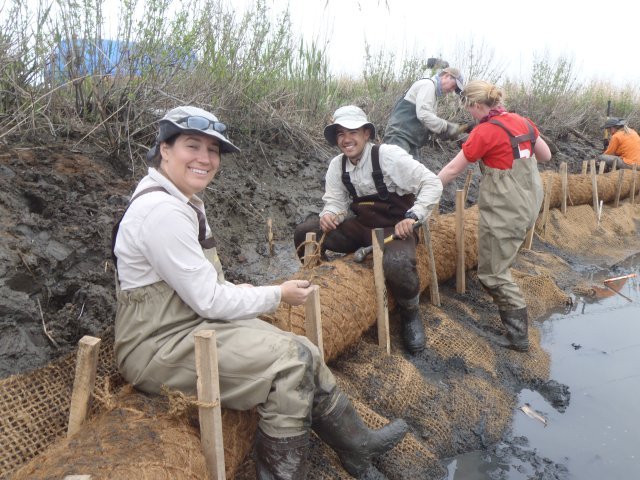EPA Research in Delaware
EPA researchers are working hard to protect communities across the nation. Learn about some of the work EPA researchers are doing in Delaware.
- Living Shorelines for Increased Resiliency
- Performance Evaluation of Popular Air Sensors
- Atmospheric Deposition of Nitrogen in the Chesapeake Bay
- Stream Monitoring Network
For more EPA work, see EPA in Delaware.
Living Shorelines for Increased Resiliency

EPA researchers in the Office of Research and Development worked with the Partnership for the Delaware Estuary on methods to better protect saltmarshes and the benefits they provide through construction of living shorelines—engineered habitat enhancements that reduce erosion while encouraging the growth of vegetation and shellfish. This effort provided key insights about how and where certain living shoreline types could restore saltmarsh habitat.
Performance Evaluation of Popular Air Sensors
There is wide interest from air monitoring agencies, researchers, and community groups in deploying smaller, more portable air sensor technologies for community-scale air monitoring projects. First, air sensors need to be thoroughly evaluated in order to understand their limitations and data quality. EPA partnered with six air monitoring agencies, including Delaware Department of Natural Resources and Environmental Control, to operate five air sensor types alongside standard regulatory monitors so that data could be compared.
Atmospheric Deposition of Nitrogen in the Chesapeake Bay
Working in collaboration with the EPA Region 3 Chesapeake Bay Program, EPA Office of Research and Development scientists developed a consistent long term emissions dataset and tailored the Community Multiscale Air Quality (CMAQ) modeling system so that it could be used to estimate atmospheric nitrogen deposition for historical (2002 – 2019), and future (2035, 2050) scenarios. The work was conducted to assist partner states, including Delaware, and watershed managers.
Stream Monitoring Network
EPA's Office of Research and Development is working with EPA regions, states (including Delaware), Tribes, river basin commissions and other entities to establish Regional Monitoring Networks for freshwater wadeable streams. The objectives are to collect long-term biological, thermal, hydrologic, physical habitat and water chemistry data to document baseline conditions across sites and detect long-term changes. This data can be used for many purposes, including informing water quality and biological criteria development and setting protection planning priorities, refining lists of biological, thermal and hydrologic indicators, and detecting trends in commonly used water quality and biological indicators.
